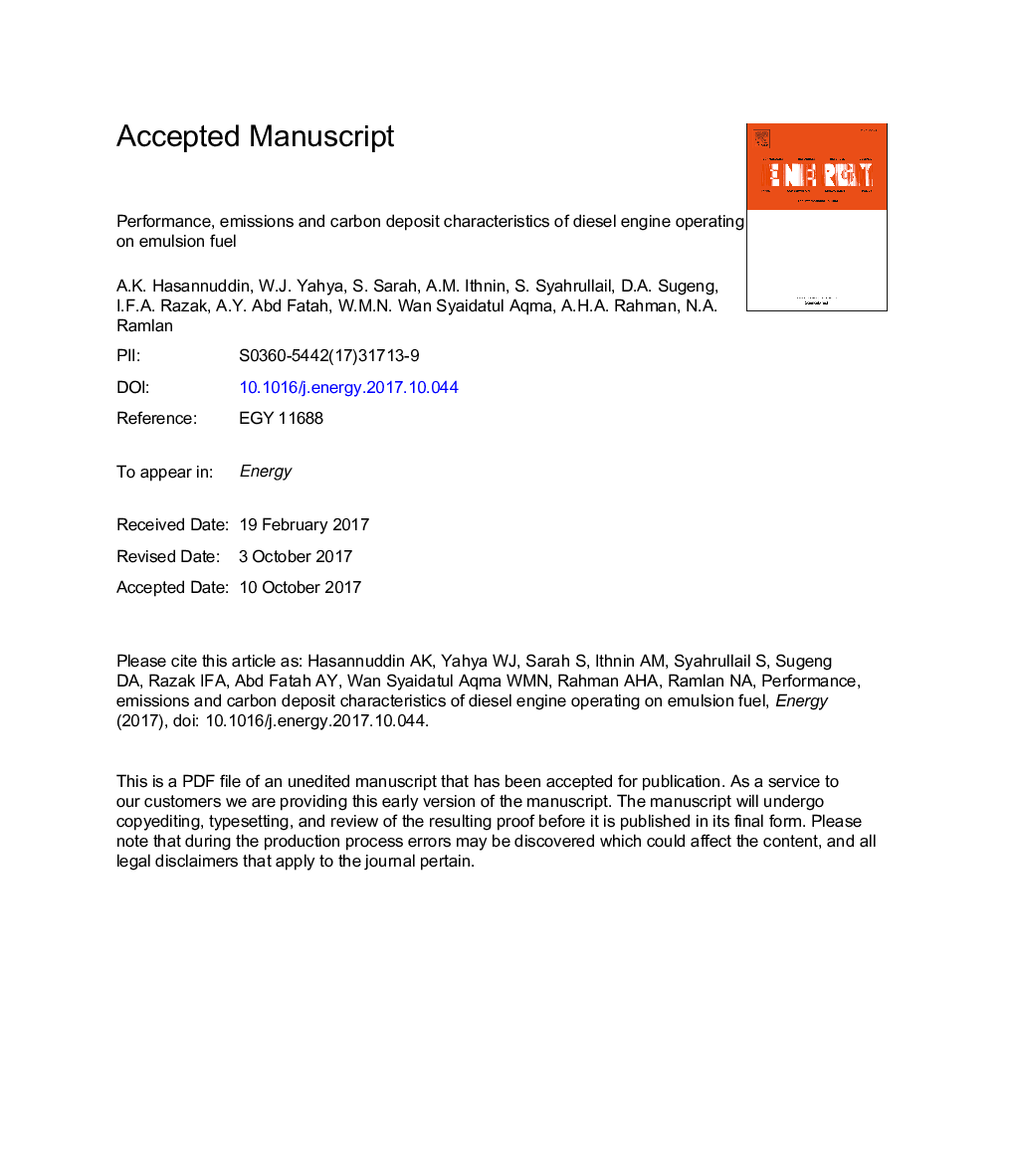| Article ID | Journal | Published Year | Pages | File Type |
|---|---|---|---|---|
| 8072522 | Energy | 2018 | 42 Pages |
Abstract
Little is known about the effects of using emulsion fuel for extended operation hours. Emulsion fuels comprise of water, low grade diesel fuel (D2) and surfactant in the ratio of 10:89:1 v/v% (E10) and 20:79:1 v/v% (E20). The characteristics of carbon deposits from an engine after a run of 200Â h were examined. The carbon deposit analysis performed were macroscopic/microscopic photographs, thermogravimetric analysis (TGA), metal element analysis (MEA) and Fourier transform infrared (FTIR). Increasing water in emulsion fuel decreased particulate matter (PM) and nitrogen oxides (NOx) altogether. TGA results observed that carbon deposit of E10 engine differed from E20 and D2 engines in terms of its characteristics, which includes darker colour of carbon deposit and the higher volatile content, while the MEA results observed that the elemental metal concentration in the carbon deposit was reduced with increasing water content. The intensity of the spectrum from CH group for the carbon deposit E10 engine was higher compared to carbon deposit D2 and E20 engine respectively due to a complete combustion. Therefore, it was observed that 10% or less water content delivered better fuel consumption, emissions, and carbon deposit.
Keywords
Related Topics
Physical Sciences and Engineering
Energy
Energy (General)
Authors
A.K. Hasannuddin, W.J. Yahya, S. Sarah, A.M. Ithnin, S. Syahrullail, D.A. Sugeng, I.F.A. Razak, A.Y. Abd Fatah, W.S. Aqma, A.H.A. Rahman, N.A. Ramlan,
